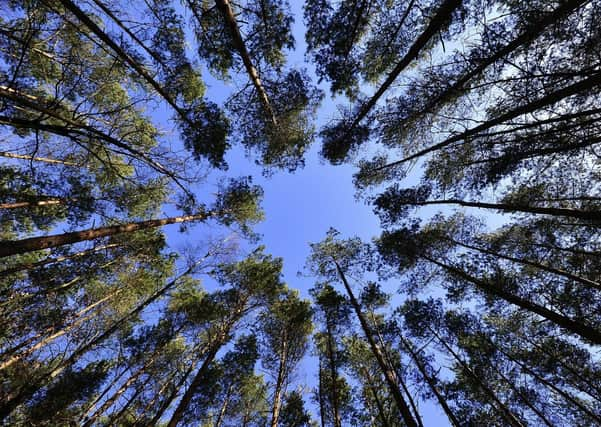Arun’s woodland cover could be increased by 20 per cent – as group identifies land prime for tree planting


Research by the organisation and mapping consultancy Terra Sulis has shown that there are 703 hectares of land in Arun which could be used for planting trees, without encroaching on high-value arable farmland, priority habitats, peat bogs or protected nature sites.
This would increase the amount of woodland in the area by 20 per cent, not including trees in urban areas such as parks and public gardens.
Advertisement
Hide AdAdvertisement
Hide AdAccording to the government’s National Forest Inventory, only 16 per cent of Arun’s 22,470 hectares of land are covered in woodland.
Environmental group Friends of the Earth say there is a potential for three per cent more to be added.
Much of this land is low grade pasture, the organisation said, calling on the Government to support farmers to grow trees on this sort of land.
But the National Farmers Union said it was important that tree planting for farmers was voluntary, to avoid negative impacts on their businesses.
Advertisement
Hide AdAdvertisement
Hide AdDanny Gross, tree campaigner at Friends of the Earth, said: “Growing more trees would help us fight climate breakdown while enabling more people to access nature in their local area.
“We need more councils to step up and grow more trees, but it’s time that ministers in Westminster offer more funding for climate action at a local level.”
Arun District Council said it had ‘a very good record’ in tree planting across the district in recent years.
One example is the planting of 11,000 trees at Bersted Brooks on marginal farmland owned by the council within an area accessible by the public, that has since been declared a Local Nature Reserve.
Advertisement
Hide AdAdvertisement
Hide AdA further example is the planting of Worms Wood in Middleton, again on agricultural land – a project involving planting 20,000 trees in partnership with the Woodland Trust which now leases the land.
This area is also open to the public to enjoy.
The council is soon to launch its own Tree Planting Strategy, which aims to set out tree planting across sites owned by the local authority.
This will provide a good example of how this can be done by choosing the most appropriate trees for the area, obtaining strong healthy tree stock, good choice of species matched with location, high standards of planting and aftercare, the council said.
By having this strategy, the authority hopes to influence other landowners in the district by setting out how to increase tree and woodland cover wherever this is possible.
Advertisement
Hide AdAdvertisement
Hide AdThe council has also committed to ensuring that, where Public Open Space, is provided with new development, that tree cover is provided as part of this.
Recent work includes the emerging Design Guide for new development which encourages developers to focus on biodiversity, protecting and enhancing tree stock, green infrastructure connectivity (wildlife corridors), and climate change resilience.
Examples of this will be the delivery of open space and tree planting within the emerging strategic sites due to be delivered within the district.
A spokesman said: “As a council, we are very conscious of the England Tree Strategy which is due to be published in the spring following consultation earlier this year and which sets very ambitious tree planting targets as part of government policy and as a response to climate change.”
Advertisement
Hide AdAdvertisement
Hide AdA spokesman for DEFRA said: “Tree planting remains at the heart of our ambitious environmental programme which is why we have committed to increase tree planting across the UK to 30,000 hectares per year by 2025.
“We have already consulted on our England Tree Strategy and announced a £640 million Nature for Climate Fund – which will be vital tools in ensuring we work closely with communities and landowners to accelerate tree planting and meet this ambitious target.”